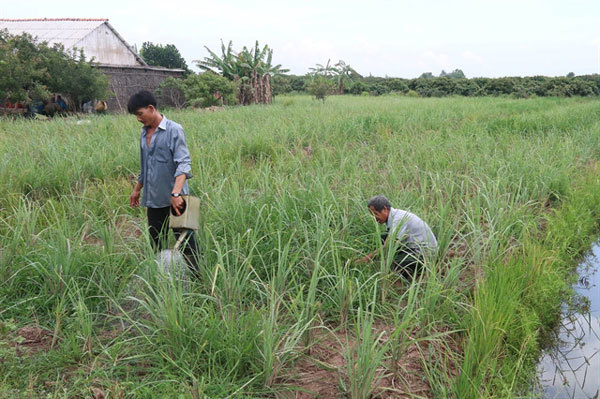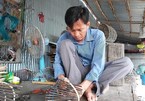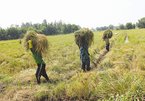Tien Giang adopts new farming models to cope with changing climate
 |
| Farmers tend lemongrass in Tien Giang Province’s Tan Phu Dong District. – VNA/VNS Photo Minh Tri |
Nguyen Thi Van, who grows 3,000sq.m of lemongrass in the district’s Phu Thanh Commune, has harvested 4.5 tonnes of stalks and sold them for VND18 million (US$780).
Traders now pay VND4,000-4,500 for a kilogramme, up VND1,000 from last month.
At these prices, farmers can earn VND50-60 million ($2,150-2,580) per hectare per year.
The prices of major agricultural produce normally increase around Tet (the Lunar New Year), and so the price of lemongrass too could continue to increase, according to Vân.
Tet falls on January 25 next year.
Lemongrass is one of the key crops of Tan Phu Dong, an islet district that is badly affected by saltwater intrusion from the sea during the dry season since it is located at the mouth of the Tien River, a distributary of the Mekong.
Nguyen Van Hai, head of the district’s Bureau of Agriculture and Rural Development, said lemongrass farming had made a large contribution to reducing poverty locally.
"The advantages of the crop are that it could be grown in soil affected by saltwater and still have high yields while demand is steady," he said.
The district has encouraged farmers with low-yield rice farms to switch to lemongrass and other drought resistant crops in the dry season.
Farmers can either completely switch to lemongrass or rotate with rice in the rainy season and grow the grass in the dry season.
The area under the grass has increased from 831ha in 2015 to more than 1,900ha now, and the annual output is 30,000 tonnes of stalks, according to the bureau.
They are sold in Tien Giang and other provinces and HCM City.
To avoid oversupply, the bureau has instructed farmers to grow lemongrass only in zoned areas and to Vietnamese good agricultural practices (VietGAP) standards.
It encourages farmers to establish co-operatives and co-operative groups to ensure outlets.
In August the National Office of Intellectual Property granted the district’s lemongrass the collective brand name of Sa Tan Phu Dong.
The crop is grown mostly for the stalk while the leaves are unused. Local authorities have called for investment to process the leaves to produce oil and use the residue to grow mushrooms, vegetables and flowers.
A hectare of land can produce about 20 tonnes of lemongrass leaves a year, and the leaves, after oil is extracted, can be used to produce around two tonnes of mushroom a year, according to the district’s authorities. VNS

Farmers in Vietnam's Mekong Delta adapt to low flood levels
Farmers in the Mekong Delta of Vietnam are taking measures to adapt to low levels of flooding this year by switching to new crops and using other cultivation methods.

Rice production in Vietnam's Mekong Delta took wrong path: expert
While the entire society was still in dreaming of being a rice export power, farmers were realistic, realizing that the higher the yield of rice, the lower profit they would get because of higher fertilizer and pesticide costs.
 Lemongrass farmers in Tien Giang Province’s Tan Phu Dong District, the Cuu Long (Mekong) Delta’s largest producer of the herb, are earning growing incomes now since prices are increasing.
Lemongrass farmers in Tien Giang Province’s Tan Phu Dong District, the Cuu Long (Mekong) Delta’s largest producer of the herb, are earning growing incomes now since prices are increasing.